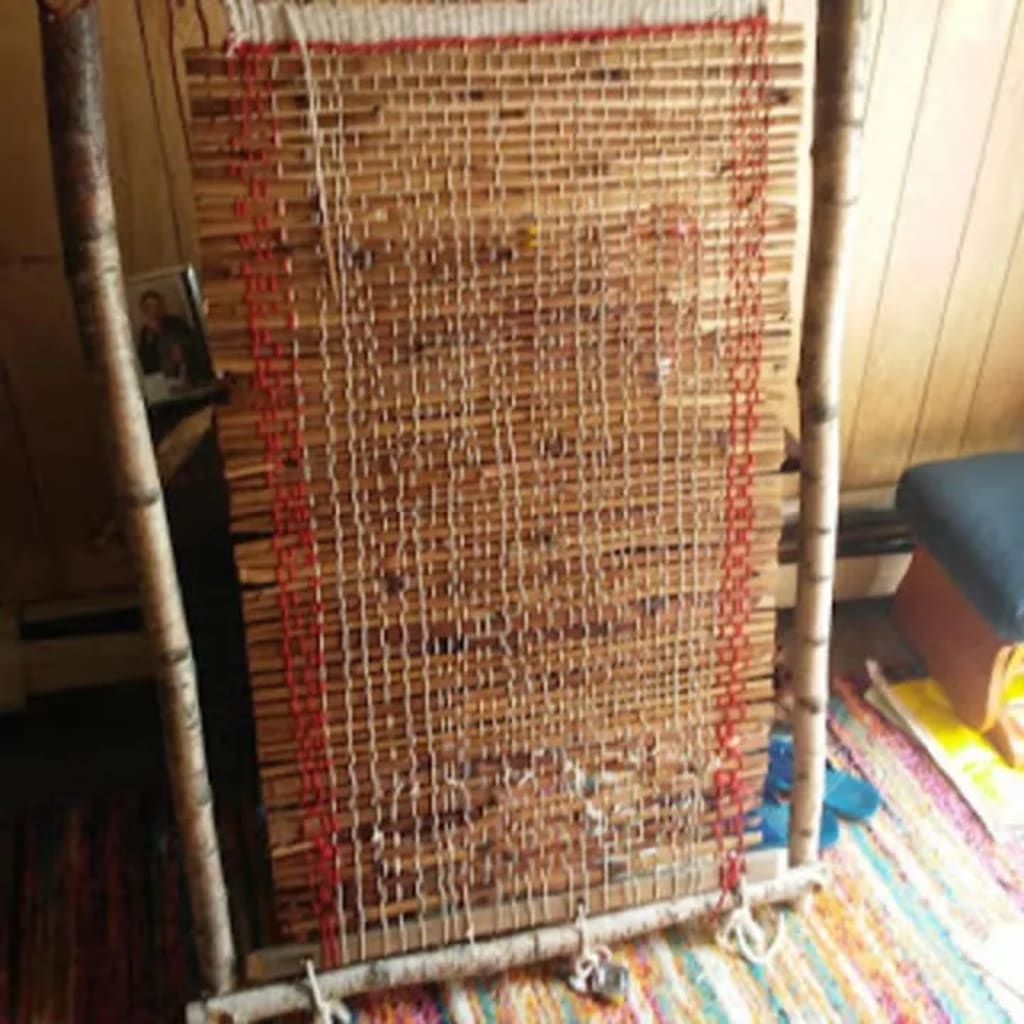
My goal in the future is to be a herbalist. So in order for me to do that I am taking courses and researching different herbs. I am lucky because I have a friend who knows about different herbs and I can ask him about them. In this article, I will be writing about the Japanese Knotweed. My friend actually grows this and has made a tea and a window blind from it.
Japanese Knotweed has so many names that it is known for. The most common name is the Japanese Knotweed or Asian Knotweed. This herb is native to East Asia (Japan, China). This herb means “remove pain” which is why in Japan it is called “itadori”. Japanese Knotweed is known for its medicinal and pain-killing uses. Once you peel the shoots and the young leaves, one can consume them. In Japan, this herb runs freely in big open spaces like mountains and on volcanoes. One can use the whole plant for medicine, not just the shoots or leaves.
Japanese Knotweed is not harmful to humans but may cause some mild irritation on the skin of some people. Japanese Knotweed can be confused with Giant Hogweed which can be harmful to people. It can cause blindness, blisters, rashes, and irritation to the skin.
When buying property, it is important to ask the realtor if there is Japanese Knotweed on the property. This herb can cause property damage in which will devalue your home and property. This herb is considered to be one of the most invasive plants because it refuses to die. It can not be killed with herbicide alone but can be controlled by excavating and using herbicide together. The most cost-effective way to get rid of this invasive plant is to use the Herbicide Treatment Program (HTP). A professional should be involved in getting rid of this herb unless one knows how to do it properly. Japanese Knotweed is spread by people unintentionally. When you cut this plant you are spreading pieces around that will take root.
Japanese Knotweed has a chemical called resveratrol. This chemical has the ability to lower one’s blood pressure, lower cancer risk, help maintain control of insulin, help with one’s cognitive health, improve heart disease, and help reduce one’s gastrointestinal problems. So adding this herb to one’s diet is healthy.
Japanese Knotweed has been known to help with bronchitis, coughs, gingivitis, sore mouth, sore throat, lung disease, some skin disorders, and fluid retention. Some people use this herb as a way to reduce sweating due to tuberculosis and to stop bleeding.
HOW TO MAKE A WINDOW BLIND
Step 1:
Cut down canes and strip all branches then split in half because they are hollow and need to be cured inside and out. Then work up as much as you need to make the project.
Step 2:
Submerge the canes into a water vat (a plastic drum works as well). Then add a pile of stems, bark, and leaves of staghorn sumac to the mix. Weigh down with rocks. Leave for several months until it has a noticeable leather smell. Add a couple of spades full of wood ash to neutralize tannins. Pull from the vat and wash with fresh water.
Step 3:
Dry in the sun.
Step 4:
Follow these instructions more or less.
After the ashes work out, the material will develop a dead fish smell. This is the alkaline from the ashes. Wash real good after. The canes end up with a leathery smell to them. Then they can be woven and used for other things.
My friend sets the vats in the fall and lets them work over the winter. It doesn’t hurt them to freeze. Then he pulls them out in April and washes them.
Here are pictures of the blinds being made.
JAPANESE KNOTWEED TEA
INGREDIENTS:
Japanese Knot-weed Root
Water
Blender
Slow Cooker
Sieve or cotton flannel
INSTRUCTIONS:
Gather the young knot-weed shoots in the Spring.
Do not use the leaves because they contain oxalic acid
Cut the older stems or roots into pieces
Put the chopped stems or roots in a blender with water and blend on high until the plant material is well ground
Then put it in a slow cooker, cover, and let it simmer overnight
Strain through a sieve or cotton flannel to remove the shoots, pieces, or pulp
Sweeten to taste
Store in the refrigerator
Side Effects:
Japanese Knotweed may be safe for most people but there must be more research done to see if there are side effects that we don’t know about. To be safe talk with your doctor or naturopath before consuming this herb. Since there isn’t enough information on the side effects, it is best not to use this herb while breastfeeding or pregnant unless you talk to your doctor first.
Dosing:
There is not enough information on how much to take. The dosage could depend on age, health, or other factors. Just because it is natural doesn’t make it safe so getting the dosage right is important which is why you need to read the directions and do what it says. It is always good to check with your doctor or pharmacist to make sure it won’t interfere with your medications.
Disclaimer:
I am not a doctor or a naturopath. So see your doctor if you are pregnant, breastfeeding, have health issues, heart conditions, or on medications.
About the Creator
Lisa Briskey
I love to write, crochet, and sew. I am a grandmother of a two-year-old granddaughter.
Follow me on Medium: https://medium.com/@lisabriskey5
And support me on my Ko-fi: https://ko-fi.com/lisaj or https://ko-fi.com/lisabriskey






Comments
There are no comments for this story
Be the first to respond and start the conversation.